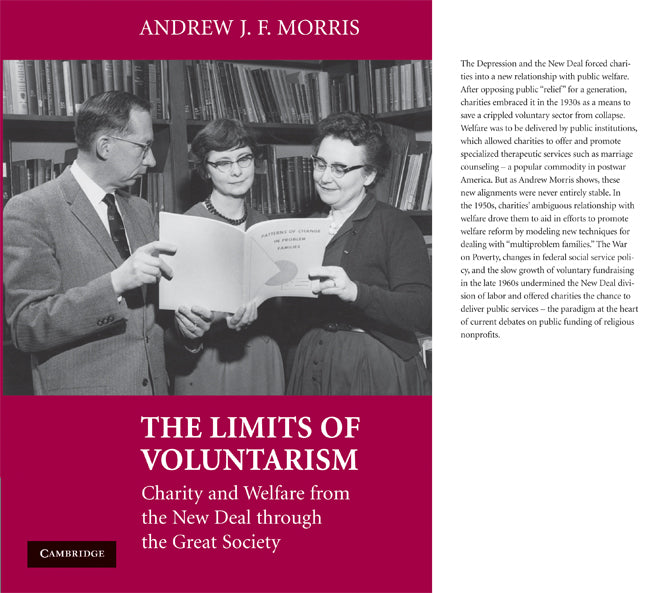Freshly Printed - allow 8 days lead
Couldn't load pickup availability
The Limits of Voluntarism
Charity and Welfare from the New Deal through the Great Society
This book examines the new relationship between charity and welfare in the era following the New Deal.
Andrew J. F. Morris (Author)
9780521889575, Cambridge University Press
Hardback, published 15 December 2008
286 pages
22.9 x 15.2 x 2.1 cm, 0.59 kg
Review of the hardback: 'Andrew Morris has provided a meticulously researched and persuasively argued volume. It totally nullifies the longstanding myth of a distinctive 'independent sector' of nonprofit voluntary organizations that have been operationally distinct from governmental agencies and programs. Morris accomplishes this task by delineating the emergence of 'New Alignments' that thrived between the 1930s and the 1970s (and, if to a lesser extent, beyond). This was an interval when voluntary nonprofit agencies helped direct and partially fund public as well as private institutional social welfare ventures and attendant policies. Thanks to Morris and a few other very capable scholars, it has become problematic for participants in the field of philanthropic studies to belittle the intense interpenetration of voluntary associations and government agencies.' Lawrence J. Friedman, Professor of Philanthropic Studies and Emeritus Professor of History, Indiana University and Visiting Scholar, Harvard University
The Depression and the New Deal forced charities into a new relationship with public welfare. After opposing public 'relief' for a generation, charities embraced it in the 1930s as a means to save a crippled voluntary sector from collapse. Welfare was to be delivered by public institutions, which allowed charities to offer and promote specialised therapeutic services such as marriage counselling - a popular commodity in postwar America. But as Andrew Morris shows in this book, these new alignments were never entirely stable. In the 1950s, charities' ambiguous relationship with welfare drove them to aid in efforts to promote welfare reform by modelling new techniques for dealing with 'multiproblem families'. The War on Poverty, changes in federal social service policy, and the slow growth of voluntary fundraising in the late 1960s undermined the New Deal division of labour and offered charities the chance to deliver public services - the paradigm at the heart of debates on public funding of religious non-profits.
1. New alignments
2. Selling service
3. Defending welfare
4. Hope for hopeless families
5. The voluntary sector's war on poverty
6. Re-alignments - the nonprofit sector and the contracting state.
Subject Areas: 20th century history: c 1900 to c 2000 [HBLW], History of the Americas [HBJK]


